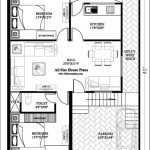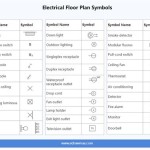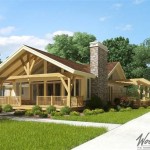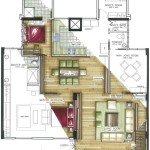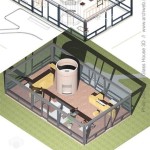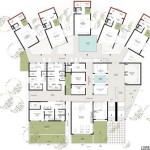Bird House Plans Northwest: A Guide to Attracting Native Birds
The Pacific Northwest, with its diverse landscapes and abundant flora and fauna, provides an ideal habitat for a wide variety of bird species. Providing nesting sites through thoughtfully designed and placed birdhouses can further enhance this natural haven and offer exciting birdwatching opportunities.
Key Considerations for Northwest Birdhouse Plans
Several factors should be considered when choosing or designing a birdhouse plan specifically for the Northwest:
- Climate: The Northwest experiences wet winters and relatively mild summers. Birdhouses should offer protection from rain and wind, and adequate ventilation to prevent overheating during warmer months.
- Native Bird Species: Different bird species have different nesting requirements. Research the specific sizes and types of birds common in your area and adapt plans accordingly. Consider species like chickadees, nuthatches, wrens, and woodpeckers.
- Materials: Cedar, redwood, or other naturally rot-resistant woods are excellent choices for birdhouse construction in the Northwest's humid climate. Avoid treated lumber as the chemicals can be harmful to birds.
- Placement: Proper placement is critical for attracting birds and protecting them from predators. Consider the specific needs of the target species regarding height, surrounding vegetation, and proximity to food and water sources.
Choosing the Right Birdhouse Plan
Numerous birdhouse plans cater to different species and aesthetic preferences. Selecting the appropriate plan is crucial for success.
- Size and Entrance Hole: The size of the birdhouse and the diameter of the entrance hole are crucial for attracting specific species. A smaller hole deters larger, more aggressive birds from taking over the nest. Research the recommended dimensions for your target species.
- Ventilation and Drainage: Adequate ventilation and drainage are essential for preventing moisture buildup and overheating. Incorporate small drainage holes in the floor and ventilation holes near the roof.
- Ease of Cleaning: Opt for plans that incorporate a hinged roof or side panel for easy cleaning and monitoring of the nest. This allows for removal of old nesting material after each breeding season, promoting healthy future nests.
Building Your Birdhouse
Building a birdhouse can be a rewarding experience. Following the chosen plan carefully ensures the best results.
- Accurate Measurements: Precise measurements are critical for proper assembly and functionality. Double-check all measurements before cutting materials.
- Quality Materials: Use high-quality, untreated wood, exterior-grade screws, and waterproof glue for durability and longevity.
- Proper Assembly: Follow the plan's assembly instructions carefully, ensuring all joints are secure and gaps are sealed to prevent drafts.
- Finishing Touches: Avoid painting the interior of the birdhouse. A natural, unfinished interior provides better grip for fledglings. Exterior surfaces can be painted with non-toxic, water-based paint in muted earth tones for camouflage.
Installing Your Birdhouse
Proper installation is key to attracting birds and providing a safe nesting environment.
- Height and Location: Research the preferred nesting height for your target species. Consider mounting the birdhouse on a pole, tree, or building, away from prevailing winds and direct sunlight.
- Predator Protection: Protect the birdhouse from predators like cats and squirrels. Install a baffle or predator guard below the entrance hole.
- Monitoring and Maintenance: Regularly monitor the birdhouse for signs of activity and perform annual cleaning after the nesting season.
Attracting Birds to Your Birdhouse
Creating a bird-friendly environment around your birdhouse increases the chances of attracting feathered residents.
- Native Plants: Plant native trees, shrubs, and flowers that provide food and shelter for birds.
- Water Source: Provide a clean water source, such as a birdbath or shallow dish, for drinking and bathing.
- Supplementary Food: Consider offering bird feeders with high-quality seed appropriate for the species you are trying to attract, especially during colder months.
Resources for Northwest Birdhouse Plans
Several organizations and websites offer free or low-cost birdhouse plans specifically tailored to Northwest bird species:
- Local Audubon Societies: Many local Audubon chapters offer valuable resources, including birdhouse plans and workshops.
- Wildlife Conservation Organizations: Organizations like the Washington Department of Fish and Wildlife and the Oregon Department of Fish and Wildlife provide information on native bird species and nesting habits.
- Online Resources: Reputable online sources offer a wealth of information and plans for building birdhouses.
Building and installing a birdhouse is a simple yet effective way to contribute to the conservation of native bird populations in the Pacific Northwest. Careful planning, construction, and placement will enhance the likelihood of attracting birds and provide years of enjoyable birdwatching opportunities.

Free Birdhouse Plans Bird House Woodworking

The Wildlife Garden Build Nest Boxes For Wild Birds Osu Extension Service

File First Floor Plan National Zoological Park Bird House 3001 Connecticut Avenue Nw District Of Columbia Dc Habs 777 D Sheet 4 12 Png Wikimedia Commons

Free Bird House Plans Bluebird Purple Martin Wren More

47 24 90 Woodlink Wren House Cedar Bird With Copper Roof Coppertop Hanging Attract Wr Планировка скворечника Скворечник Крапивник

Free Bird House Plans Bluebird Purple Martin Wren More

Nestwatch Right Bird House

National Zoological Park Bird House 3001 Connecticut Avenue Nw District Of Columbia Dc Library Congress

Free Bluebird House Plans Multiple Designs

File Basement Plan National Zoological Park Bird House 3001 Connecticut Avenue Nw District Of Columbia Dc Habs 777 D Sheet 3 12 Png Wikimedia Commons

